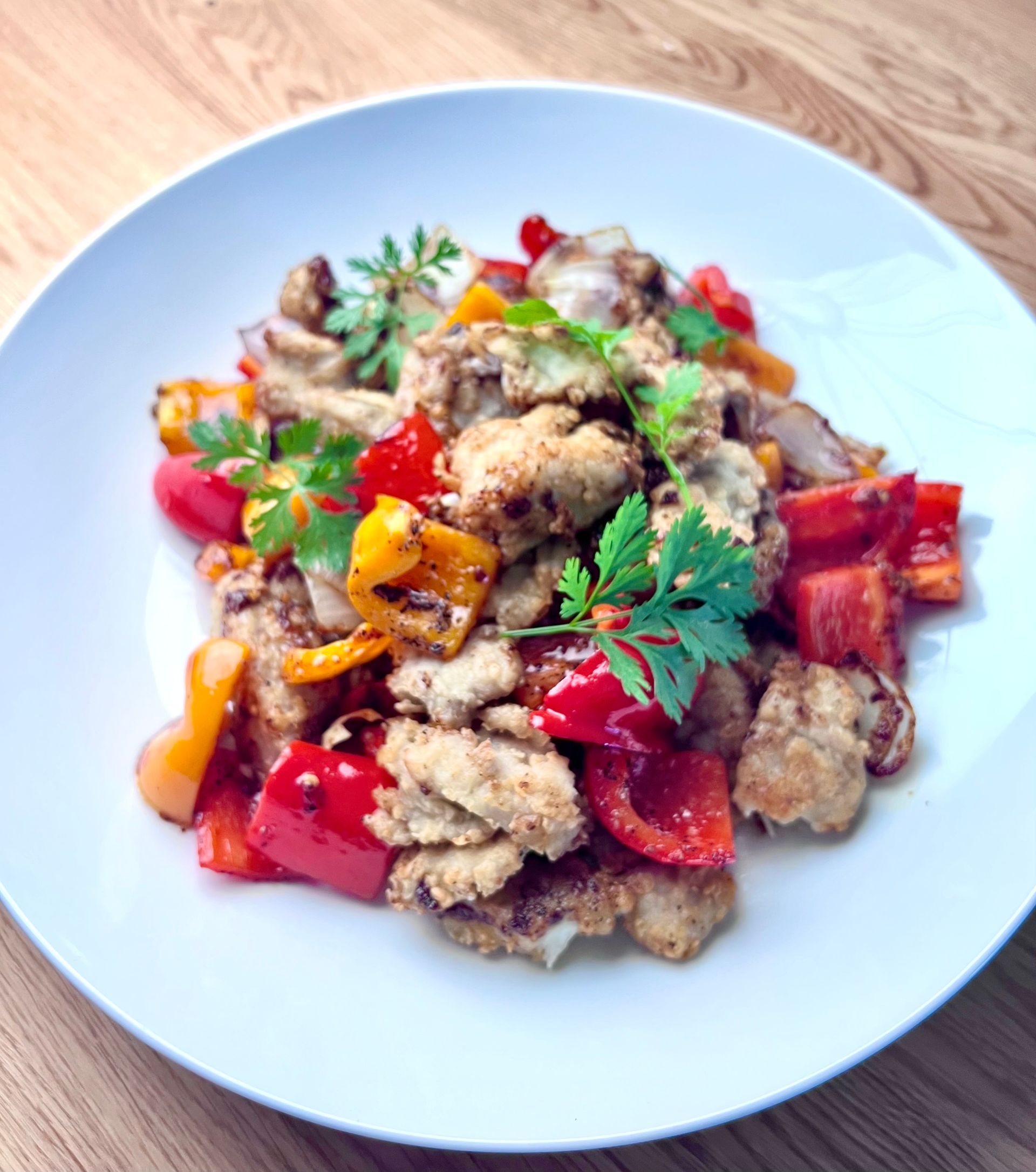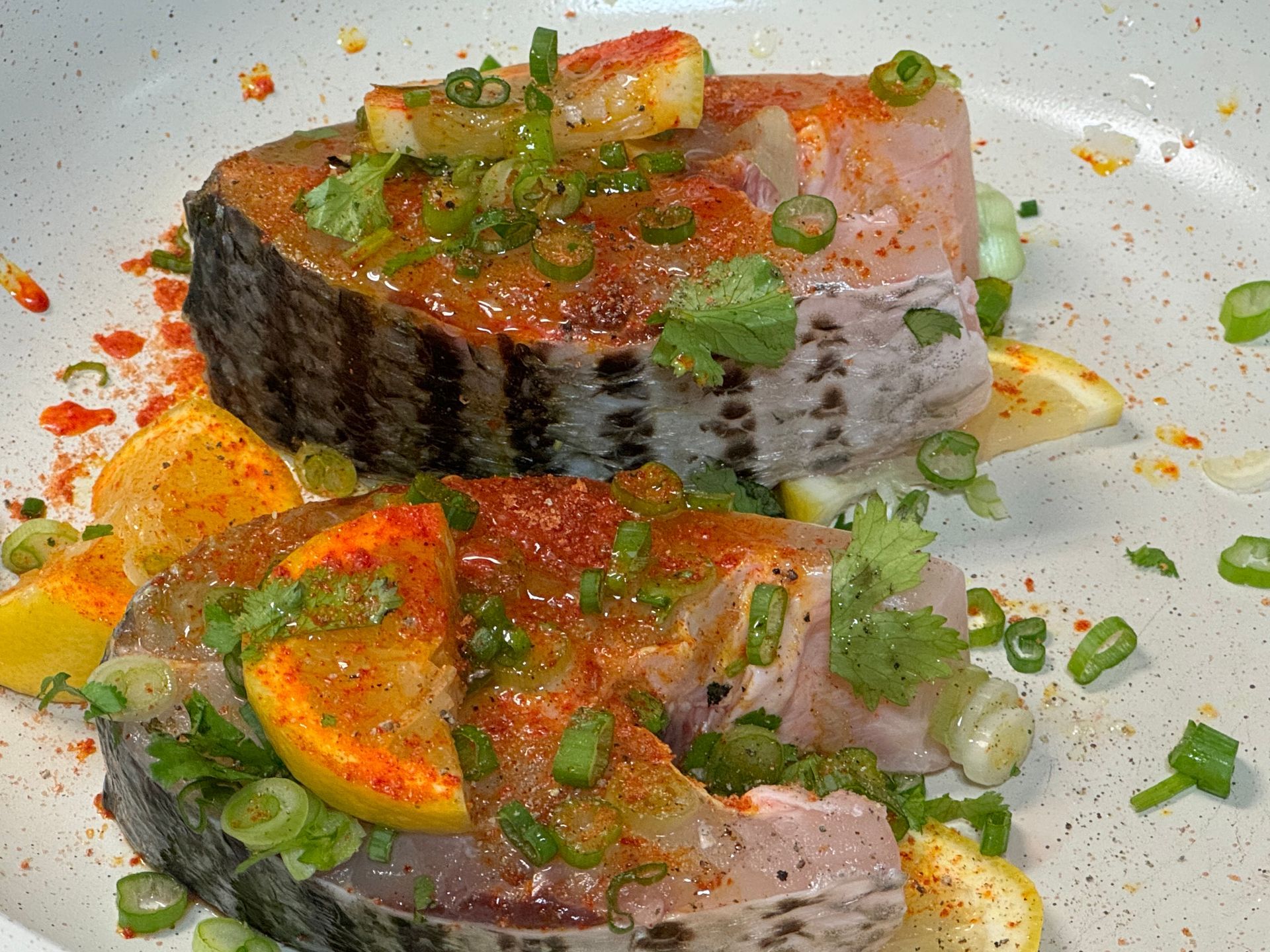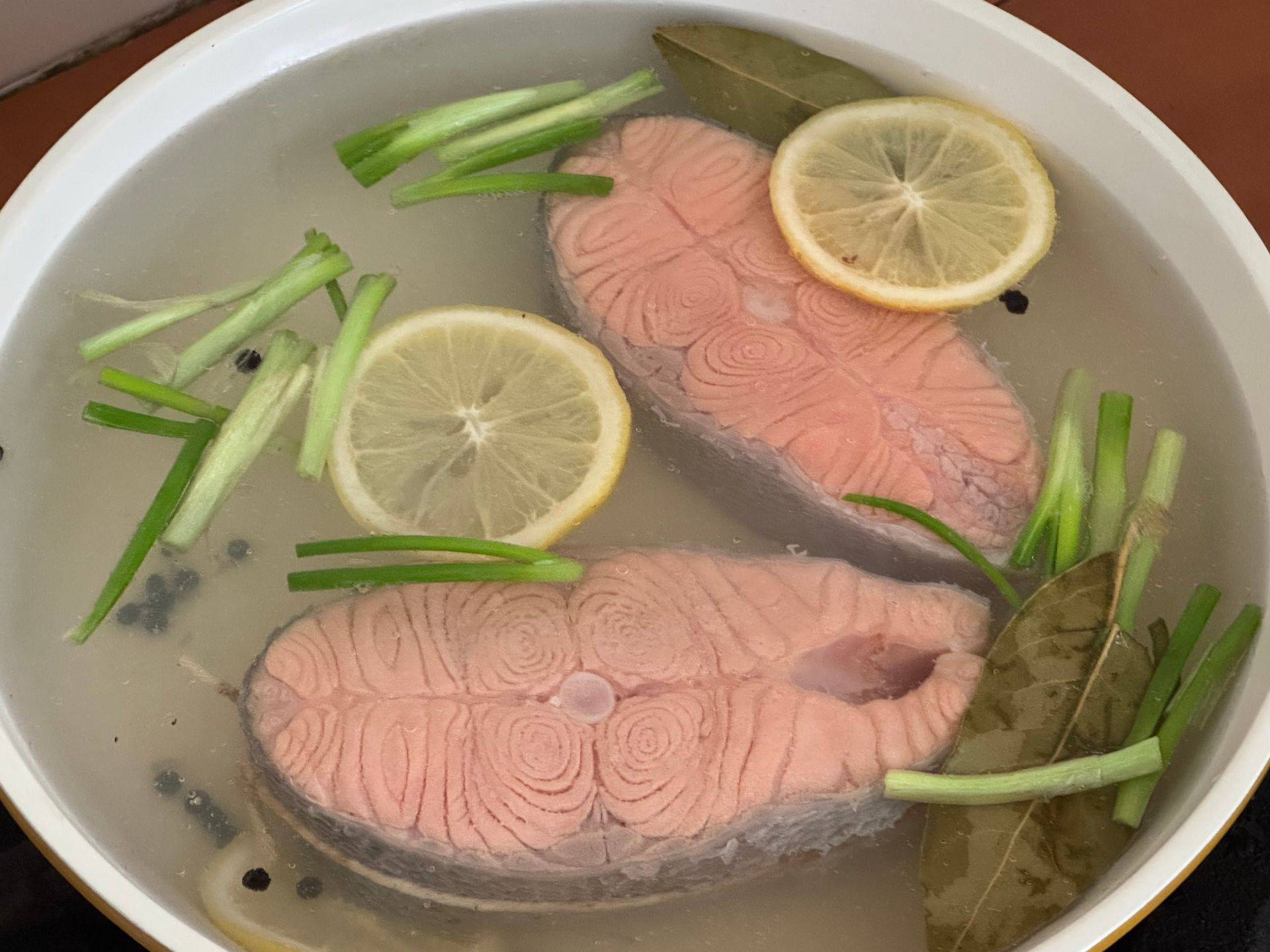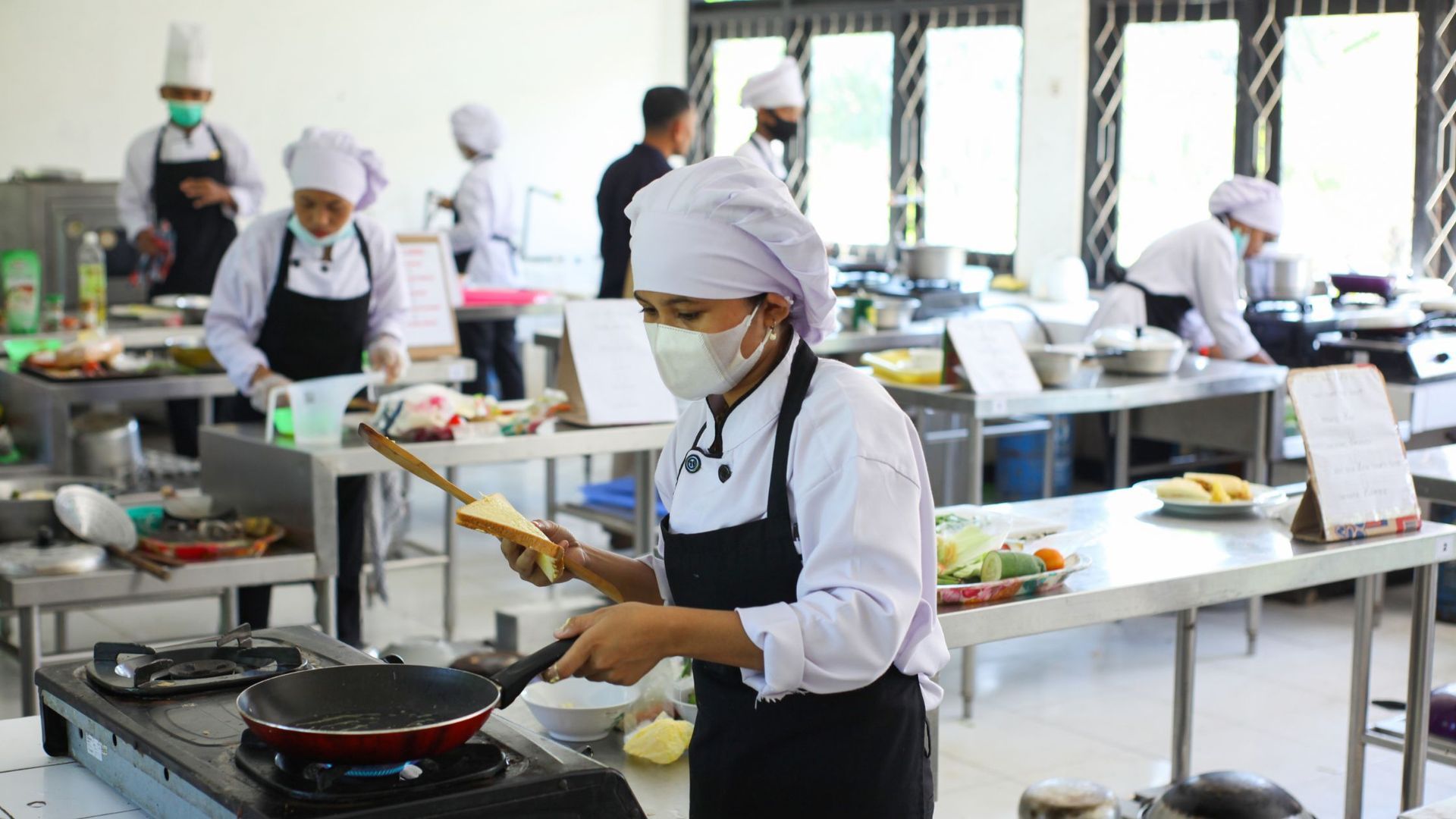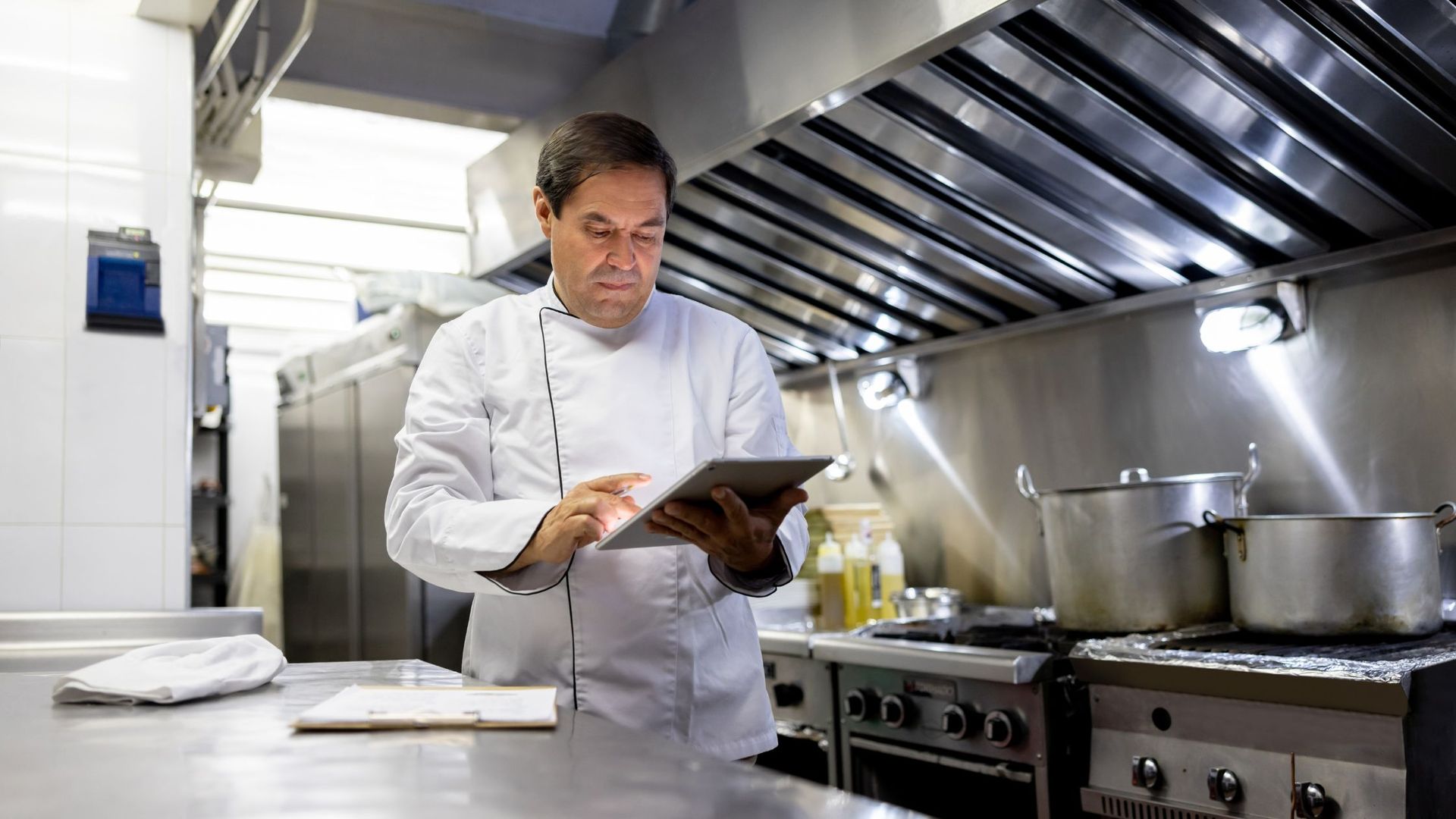Maximizing Kitchen Efficiency: Tips from a Certified Master Chef
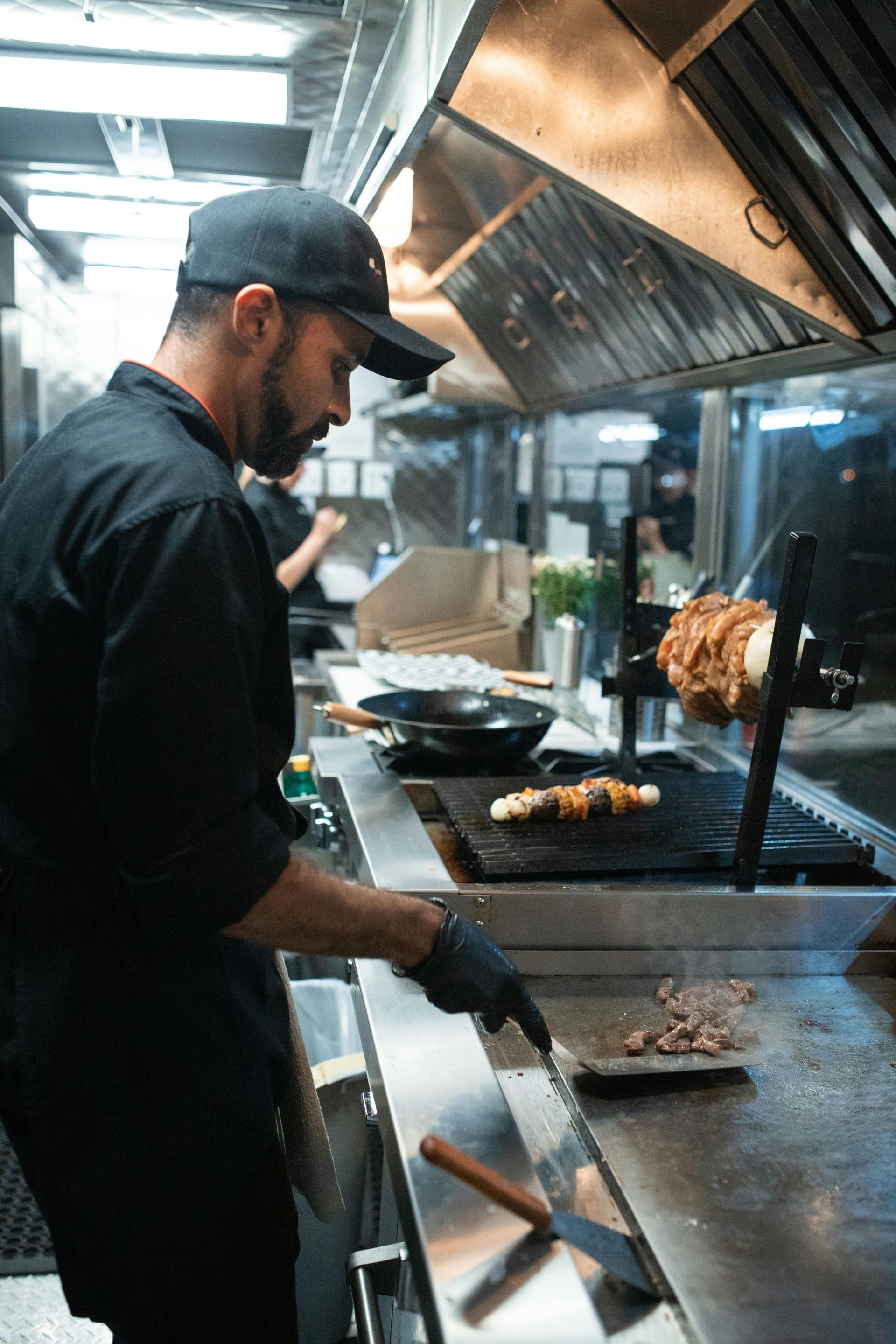
Running a successful, efficient kitchen comes down to organization and execution. But what is a successful kitchen? You may define success differently than someone else.
For me, a successful kitchen is a professional, organized, well-managed kitchen. The kitchen brigade prepares delicious, nutritious cuisine, keeps costs appropriate, ensures consistency, and creates a better work environment.
On the other hand, a kitchen that struggles with workflow, menu execution, and communication will face higher labor costs, wasted ingredients, and frustrated staff, which often leads to turnover. The difference between success and failure often comes down to efficiency, which, in turn, comes from having a well-thought-out plan before you start and then the flexibility to make changes when needed.
As leaders, our role is to provide our staff with the tools they need to succeed and create career paths. I’ll write more about my thoughts and experiences regarding ‘servant leadership’ in a future blog.
I’ve spent years working in kitchens of all sizes, including restaurant kitchens, catering kitchen facilities, innovation incubators, R&D kitchens, huge operations plants, and a few of the finest restaurant kitchens in North America.
In that time, I’ve learned that every kitchen runs on the same basic principles.
Kitchen efficiency is never about cutting corners—it’s about setting up systems that allow a kitchen to operate at its best. Although each kitchen has slightly different ingredients, recipes, equipment, and staff, success always comes down to well-planned strategies. This means designing a menu that fits the kitchen’s capabilities (or building a kitchen based on the menu), placing equipment where it’s most useful, hiring and training the right staff to work together in sync.
In this post, I’ll break down the key areas that make the biggest impact:
- Building a strategic plan and staying true to it
- Developing a menu to properly impact kitchen efficiency and why simplicity matters
- Budgeting to hire the experience level you need for success
- Optimizing kitchen layout to reduce wasted steps and time
- Proper procurement/sourcing
- Workflow improvements that speed up service and improve consistency
- The role of training and cross-training in keeping a team strong
Let’s get started.
Menu Engineering for Maximum Efficiency & Profitability
When planning for kitchen efficiency, you either build your kitchen to support your menu concept or build your menu based on your kitchen layout and equipment.
Let me tell you a quick story. My son is an excellent chef; years ago, he worked for an entrepreneur who had a food truck in Philadelphia. This guy understood efficiency. He built the menu around a simple concept: delicious Filipino rice bowls. Each day they prepared steamed rice with popular proteins (chicken adobo, Filipino-style pork, beef, and a vegetarian option), authentic condiments and one key topping—a fried egg which was cooked to order. Every order got one perfectly fried egg, cooked on a propane griddle! That was it. Every order followed the same format.
I visited the food truck on occasion and was always impressed that the food was so freshly prepared, piping hot, and absolutely delicious. There was always a long line of loyal customers, and they always sold out. I was so proud of my son. He was cooked in the food truck serving every meal and frying all of those perfectly cooked eggs! Amazing.
So, this kitchen was extremely efficient. The owner knew his customers, understood value, and understood what foods they could produce with the equipment and pricing strategy they had. It was a totally well-thought-out plan and execution. I imagine it was very profitable, as he now has a popular, thriving restaurant. The food truck succeeded not because the food was better (though it was great) but because he designed the operation for speed, profit, and execution.
Too many restaurants struggle because their menus are too complex, labor-intensive, or poorly balanced. A smart approach ensures that every dish serves a purpose, both from a profitability and operational efficiency standpoint. Early in my career, I was guilty of building challenging menus that simply did not make sense and were not profitable. I think it's a 'pride' thing; we chefs have our artistic side.
Why Limiting Menu Items Improves Execution and Consistency
Too many restaurants or businesses overload their menus, trying to appeal to every customer. A bloated menu is confusing; it increases prep time, slows service, and leads to inconsistency. The best kitchens focus on a smaller number of well-executed dishes; I would consider these to be 'signature dishes.'
A streamlined menu improves efficiency by:
- Reducing the number of ingredients needed to be sourced, which simplifies purchasing, prep, and inventory management.
- Allowing cooks to master a smaller set of dishes, improving speed and consistency.
- Cutting down on waste by ensuring ingredients are used across multiple dishes.
- Lowering food costs because you are purchasing more of the same ingredients.
- Providing your customers with choice that doesn’t overwhelm.
The Power of Specials: Engaging Customers While Controlling Inventory
Daily or weekly specials give chefs flexibility while keeping the menu focused. Specials allow a restaurant to:
- Test new dishes without committing to a full menu change. This provides robust, immediate customer feedback.
- Take advantage of seasonal ingredients when they are at peak quality and low cost.
- Benefit from upcycled and/or inexpensive 'ugli’ produce for recipes.
- Move excess inventory by featuring dishes that use ingredients already on hand, bringing in revenue. To be clear, this is never about serving old food. This is proactively understanding ingredient utilization!
- Work with your purveyors; they know what is trending and sometimes can offer deals on ingredients they need to sell.
Menu engineering isn’t just about choosing popular dishes—it’s about designing a menu that supports smooth kitchen operations, controls costs, and maximizes profitability.
Smart Kitchen Layout & Equipment Placement
In my consulting business, I travel to many countries to research trends, ingredients, equipment, cooking techniques, etc. for my clients. Recently, I visited a brunch spot in Malaysia that featured Kaya toast, a popular toast and coconut jam breakfast. It’s often served with gently, poached eggs, and in this busy restaurant, the eggs were held in a large Lexan of water heated with a circulator holding dozens of eggs at the ‘soft, runny yolk’ stage of cooking. There was a large toaster station where young cooks patiently sliced loaves of white bread and toasted the slices of bread to order. This Kaya toast station was a focal point for the restaurant, and the cooks prepared hundreds of orders of this popular breakfast snack perfectly! No one likes burnt or soggy toast!
Recently, I visited a huge, local, Sunday outdoor market in Japan. It was extremely crowded. The market was about a mile long with vendors selling beautiful fruits, vegetables, baked good, Japanese knives and tools, plants. And plenty of stalls with local street food. There was a taco stand which continually had a small line of about 8 or 10 people waiting. There were two workers, one person took the orders, helped with plating and condiments and took the money while the other person toasted corn tortillas on a propane plancha, adding shredded cheese, cooked chicken or pork (offals), sweet potato mash and onions. The queue was always moving; they prepared about six or eight soft tacos every two minutes. All delicious and craveable. These two entrepreneurs understood their customers and kept things very simple, it was extremely impressive. I had the pork offals-really delicious with the famous, Japanese baked sweet potato mash and local hot sauce!
An efficient kitchen starts with design. A poorly planned layout leads to wasted movement, slow ticket times, and increased stress during service. A well-thought-out kitchen allows the team to work quickly, safely, and with minimal wasted effort. This becomes increasingly obvious as volume increases.
Designing for Speed and Safety
The best kitchens are built to keep movement controlled and efficient. Stations should be arranged so that cooks don’t have to take unnecessary steps between prep, cooking, and plating. If a layout forces staff to cross paths too often, collisions happen, slowing everything down. A kitchen should be designed to keep hot, cold, and dry storage close to the areas where they’re needed most.
Another major factor is safety. Slippery floors, crowded spaces, and awkwardly placed equipment create hazards that can lead to accidents. There should be enough space for staff to move freely, but not so much that they waste steps getting from one area to another.
The Work Triangle: Keeping Movement Efficient
I have a few simple rules: If you use it all the time, it should be within arm’s reach, and you should use the correct tool for the job.
One of the simplest ways to increase efficiency is to use the work triangle concept. This principle, originally developed for home kitchens, also applies to restaurants. The idea is that the three most important areas—storage (refrigeration and dry goods), preparation, and cooking—should be positioned to minimize movement.
In a well-designed kitchen, a cook should be able to reach everything they need with just a few steps. If they’re constantly walking back and forth between the fridge, cutting board, and stove, valuable time is lost. A properly planned kitchen places these areas close together, reducing unnecessary movement and keeping service running smoothly.
Multi-Functional Equipment: The Secret to Kitchen Efficiency
Space is always at a premium in a kitchen. The more versatile a piece of equipment is, the better. Investing in multi-functional equipment can reduce the need for extra appliances while keeping operations streamlined.
- Combi ovens can bake, steam, roast, and even ‘sauté,' replacing multiple pieces of equipment.
- Griddles or Planchas allow for a variety of cooking techniques, from searing steaks to making pancakes, without the need for multiple burners.
- Sous vide circulators let chefs cook proteins in advance and finish them quickly on the line, reducing last-minute stress.
Using equipment that can handle multiple tasks saves space, reduces labor, and simplifies workflow.
Optimizing Workflow: How a Kitchen Should Operate Like a Machine
A restaurant kitchen runs best when every station moves in sync. Without a structured workflow, service slows down, staff gets overwhelmed, and mistakes happen. A well-planned system allows multiple tasks to occur at once, ensuring that orders move from prep to plate without unnecessary delays. The best-run kitchens are quiet; no talking is necessary, as the team is so well-managed and experienced that they are in total sync.
Parallel Processing: Cooking and Plating Should Happen Simultaneously
One of the most common mistakes in restaurant kitchens is treating cooking and plating as separate steps. In an efficient operation, these tasks happen simultaneously.
Let's say an order comes in for steak with mashed potatoes and roasted vegetables. If the grill cook waits until the steak is done before plating starts, the ticket time increases. Instead, the plating station should prepare sides while the protein is still cooking. The moment the steak is ready, it goes directly onto the plate, followed by a final garnish, and out to the customer.
This kind of coordination requires clear communication between stations. A well-trained team calls out orders, works in rhythm and knows exactly when each component should be ready. And let’s remember, this is nothing new. The great Auguste Escoffier created this system. In Escoffier's brigade system, each cook has specific responsibilities, which helps the kitchen run efficiently and minimizes confusion.
Staff Training & Cross-Training: The Key to a Resilient Kitchen
A well-run kitchen depends on a team that knows exactly what to do, when to do it, and how to adjust when things don’t go as planned. No matter how strong the workflow or menu is, efficiency will fall apart if the staff isn't trained properly.
The Importance of Consistent Training and Onboarding
A strong training program doesn’t just teach cooks how to follow recipes—it builds consistency, organization, and confidence.
When new staff start, they should have clear instructions on executing every dish correctly. One of the most effective methods I’ve used is a combination of:
- Recipe books with step-by-step instructions and photos—this ensures every dish is made the same way every time.
- Training videos of cooking menu items—visual learning helps new cooks understand techniques faster.
- Station mise en place & kitchen maps—a simple guide that shows where everything is kept, so new hires don’t waste time searching for tools or ingredients.
Too many kitchens throw new employees into service with minimal guidance and expect them to pick things up along the way. That leads to mistakes, slow ticket times, and unnecessary stress. A well-trained cook is faster, more confident, and less likely to leave due to frustration.
Cross-Training: Why Every Kitchen Needs Flexible Staff
In any kitchen, people call in sick, get injured, or quit unexpectedly. If only one person knows how to handle a critical task, the entire operation can slow down or stop. That’s why cross-training is essential.
My first job was as a dishwasher/pot washer in a busy, family-owned diner. It was one of those jobs where I had many bosses (the chef, his parents, and his wife). I was encouraged to work quickly and efficiently. The pitch was that if I finished my work, I could learn to cook, fabricate fresh flounder, make milkshakes, cook macaroni, and make lasagna. It was not a well-managed experience, but as a young, aspiring cook, it was probably one of the best jobs of my career!
Cross-training doesn’t just help during emergencies—it also creates better career paths for staff who want to grow. A dishwasher who learns prep skills might become a line cook. A line cook who understands every station becomes a natural choice for sous chef, helping to minimize turnover.
How Pre-Shift Meetings Improve Kitchen Communication
A quick pre-shift meeting helps set expectations and eliminate confusion before the first ticket prints.
- Review menu changes and specials so no one is caught off guard.
- Go over expected volume so prep levels can be adjusted if needed.
- Discuss potential issues from the night before and make adjustments.
- Discuss staff changes in case of absences, cross-training, etc.
When everyone knows what’s coming, service runs smoother. No surprises, no confusion, just execution.
A strong, flexible team doesn’t just make a kitchen more efficient—it makes it more reliable.
Reducing Waste & Inventory Mismanagement
Food waste is one of the biggest threats to a restaurant’s profitability. Ingredients that spoil before they’re used, excessive portions that end up in the trash, and poor inventory management can drain margins without most owners realizing it. A well-run kitchen controls waste through organization, tracking, and smart purchasing.
FIFO: The Key to Preventing Spoilage
FIFO (First In, First Out) is a simple but effective system for managing inventory. It ensures that older ingredients are used before newer ones, reducing spoilage and unnecessary waste.
- When new ingredients arrive, store them behind older stock so that the oldest items are used first.
- Label everything with arrival dates to track freshness.
- Regularly check perishable items to catch anything approaching its expiration before it goes bad.
Without FIFO, kitchens often throw out food simply because it wasn’t used in time. A structured system helps prevent that loss.
Tracking Waste and Proper Receiving to Identify Problems.
Many kitchens don’t realize how much food is wasted because they aren’t tracking it. Waste tracking helps identify patterns and adjust processes to fix the problem. In some kitchens, food received is not inspected or weighed and is potentially food waste before it enters the kitchen.
- Document/maintain receiving logs to list the quality of produce, weights of proteins, etc.
- Keep a waste log to record which ingredients are thrown away and why.
- Monitor portion sizes. If portions are too large, customers may not finish their meals. If appropriate, adjust portion sizes to reduce waste without sacrificing value.
- If a certain ingredient is always left over at night's end, it may be over-ordered or underutilized in the menu.
When waste is measured, it can be reduced.
Ingredient Cross-Total Utilization: Maximizing Every Component
A well-designed menu ensures that ingredients serve multiple purposes. This prevents unused stock from going to waste and reduces the number of items a kitchen needs to keep on hand.
- One sauce, multiple dishes: Grand sauces such as bechamel, velouté, brown sauce, and tomato sauce can be used for sauces, stews, braises, pasta and pizza, etc.
- Shared proteins: Proteins from dinner service can be repurposed into delicious salads or soups.
- Vegetable scraps: Instead of discarding trimmings, use them for recipes for stocks, sauces, or purées.
The more a kitchen can cross-utilize ingredients, the less likely food will be wasted.
Conclusion
Efficiency in a restaurant kitchen isn’t about taking shortcuts—it’s about setting up the right systems so everything runs smoothly.
Small adjustments can have a major impact on profitability and performance. A simplified menu improves execution and lowers labor costs. Cross-trained staff ensure that service continues even when someone calls out. A well-planned layout minimizes wasted movement and speeds up prep. Smart inventory management reduces food waste and prevents shortages.
Ready to optimize your kitchen’s efficiency? Book a consultation today and take the first step toward a more profitable, stress-free kitchen.

